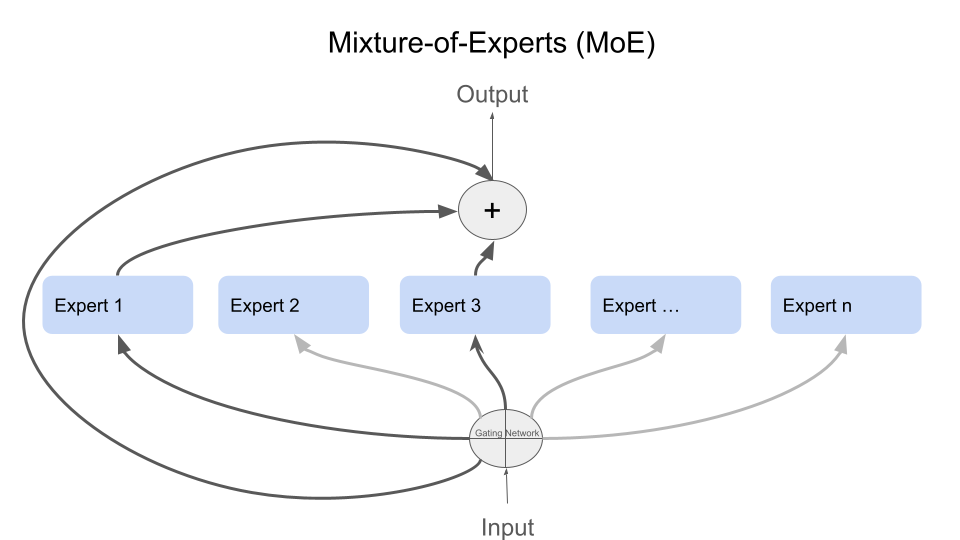Sitemap
A list of all the posts and pages found on the site. For you robots out there is an XML version available for digesting as well.
Pages
Posts
Reflections on Product Prioritization Strategies
Published:
Reflections on Product Prioritization Strategies
From an AI Product Management Course  A journey of understanding, evaluating, and gaining deeper awareness of what truly makes a difference in the world of products.
A journey of understanding, evaluating, and gaining deeper awareness of what truly makes a difference in the world of products.
The Compass of Direction and Evaluating New Ideas
Published:
The Compass of Direction and Evaluating New Ideas
Reflections from an AI Product Management Course 
In the Age of AI Hype, What Does It Mean to Build an AI Product?
Published:
In the Age of AI Hype, What Does It Mean to Build an AI Product?

Mixture of Experts: Your Comprehensive Guide to Understanding this Revolutionary AI Technology
Published:
Mixture of Experts: Your Comprehensive Guide to Understanding this Revolutionary AI Technology

Can AI Replace Researchers? The AI-Scientist Research Paper!
Published:
 Image source [3]
Image source [3]
Fine-Tune Gemma 2 2b with Keras and LoRA (Part 3)
Published:
 Continuing our educational series focusing on Arabic language handling with large language models, in this part, we will explore how to fine-tune the Gemma2-9b model on an Arabic dataset using the Keras library, Keras_nlp, and LoRA technique. We will cover how to set up the environment, load the model, make necessary modifications, and train the model using model parallelism to distribute model parameters across multiple accelerators.
Continuing our educational series focusing on Arabic language handling with large language models, in this part, we will explore how to fine-tune the Gemma2-9b model on an Arabic dataset using the Keras library, Keras_nlp, and LoRA technique. We will cover how to set up the environment, load the model, make necessary modifications, and train the model using model parallelism to distribute model parameters across multiple accelerators.
Fine-Tune Gemma 2 2b Using Transformers and qLoRA (Part 2)
Published:
 As part of our tutorial series focusing on handling Arabic with large language models, we will continue in the second part by exploring specialized methods for fine-tuning the
As part of our tutorial series focusing on handling Arabic with large language models, we will continue in the second part by exploring specialized methods for fine-tuning the Gemma-2b model on an Arabic dataset to enhance its performance. We will use the Transformers library and qLoRA (Quantized Low-Rank Adaptation) technique to reduce memory usage.
Build a RAG Application Using Gemma 2 (Part 1)
Published:
 When working on a project that requires handling the Arabic language, you might wonder whether to use Retrieval-Augmented Generation (RAG) or to fine-tune a model with a new Arabic dataset. In this series of tutorials with two parts, we will explore both options: using RAG and fine-tuning a model with Arabic data, specifically Wikipedia. Throughout the project, we will focus on open-source models, utilizing Gemma 2 Instruct and an open-source embeddings model. We will also leverage the LangChain framework to streamline the process of building the RAG and fine-tuning the model. Let’s dive into the practical implementation.
When working on a project that requires handling the Arabic language, you might wonder whether to use Retrieval-Augmented Generation (RAG) or to fine-tune a model with a new Arabic dataset. In this series of tutorials with two parts, we will explore both options: using RAG and fine-tuning a model with Arabic data, specifically Wikipedia. Throughout the project, we will focus on open-source models, utilizing Gemma 2 Instruct and an open-source embeddings model. We will also leverage the LangChain framework to streamline the process of building the RAG and fine-tuning the model. Let’s dive into the practical implementation.
Next-Gen Form Filling with Gemini 1.5 Pro
Published:
Filling out forms can be boring and time-consuming. This often leads to user frustration and incomplete submissions. However, conversational AI, like the Gemini 1.5 Pro language model, is changing how we interact with forms.
Retrieval Augmented Generation (RAG) using Gemma to Explain Basic Data Science Concepts
Published:
The world of data science can be daunting for newcomers, filled with complex terminology and intricate concepts. But what if you had an AI assistant by your side, ready to explain these concepts in simple terms and guide you through the learning process? This is where the power of Retrieval Augmented Generation (RAG) comes into play. In this blog post, we’ll embark on a hands-on journey, building an AI-powered explainer for data science concepts using the RAG model and the Gemma language model.
portfolio
Amaken
Published:
MoonsTour
Published:
publications
Paper Title Number 1
Published in Journal 1, 2009
This paper is about the number 1. The number 2 is left for future work.
Recommended citation: Your Name, You. (2009). "Paper Title Number 1." Journal 1. 1(1). http://academicpages.github.io/files/paper1.pdf
Paper Title Number 2
Published in Journal 1, 2010
This paper is about the number 2. The number 3 is left for future work.
Recommended citation: Your Name, You. (2010). "Paper Title Number 2." Journal 1. 1(2). http://academicpages.github.io/files/paper2.pdf
Paper Title Number 3
Published in Journal 1, 2015
This paper is about the number 3. The number 4 is left for future work.
Recommended citation: Your Name, You. (2015). "Paper Title Number 3." Journal 1. 1(3). http://academicpages.github.io/files/paper3.pdf
talks
Bias in Artificial Intelligence -Types and Causes
Published:
Bias in Artificial Intelligence -Types and Causes
Natural Language Processing (NLP)
Published:
Deep Learning Course: Natural Language Processing (NLP)
Intro to JAX: Accelerating Machine Learning Research
Published:
Intro to JAX: Accelerating Machine Learning Research
Modern Convolutional Neural Networks
Published:
Modern Convolutional Neural Networks such as AlexNet, VGG, NiN, GoogLeNet, ..etc.
MLOps (Machine Learning Operations) Fundamentals
Published:
MLOps (Machine Learning Operations) Fundamentals
The Impact of Attention Mechanisms on AI
Published:
The Impact of Attention Mechanisms on AI
Fine-tuning and Deploying Open-Source LLMs
Published:
Fine-tuning and Deploying Open-Source LLMs
The Journey on the Path to Artificial Intelligence
Published:
The Journey on the Path to Artificial Intelligence
How to Reduce the Costs of LLMs
Published:
How to Reduce the Costs of LLMs
Build powerful Generative AI apps with LangChain
Published:
Build powerful Generative AI apps with LangChain ( part 1 & part 2)
Building Powerful Generative AI Applications with Google Gemini and LangChain: Agents
Published:
WiDS at KFUPM :Building Powerful Generative AI Applications with Google Gemini and LangChain: Agents
How To Fine Tune Gemma LLM Models
Published:
How To Fine Tune Gemma LLM Models
teaching
Data Science Course
Course, Online, 2020
An Intensive Course in Data Science.
Deep Learning Course
Course, Online, 2021
A course on deep learning methods with applications to computer vision, natural language processing . you will gain foundational knowledge of deep learning algorithms and get practical experience in building neural networks in TensorFlow.
Data Engineering Course
Course, Online, 2022
A data engineering course that focuses on how to create a real-time Twitter analytics dashboard for streaming tweets with a sentiment analysis (NLP) feature.
